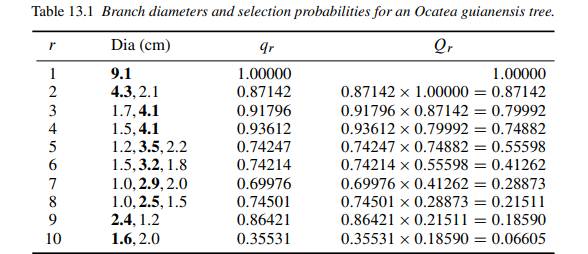Suppose a sampler begins selecting branches with probability proportional to d 8/3( d = diameter) and then switches to selecting with probability proportional to d3 at the last three nodes. Would this affect the theoretical unbiasedness of the estimates? Why or why not?
In Example 13.3 (also see Example 13.2), the fresh weight of woody tissues is estimated more precisely than the fresh weight of foliage. What is the most likely explanation for this?
Example 13.2
Table 13.1 contains branch diameters (cm) measured at each of 10 nodes on an Ocotea guianensis tree in Brazi

Branches were selected with probability proportional to d2:67. The diameters of the selected branches are in bold face. For example, there were two branches at the third node and the larger one with a diameter of 4.1 cm was selected with conditional selection probability
![]()
The unconditional probability of selecting this branch was:
Q3 = 1:0 0:87142 0:91796 = 0:79992:

